Remember the last time you shopped? Browsing online but heading in-store for that final touch-and-feel before purchasing?
This isn't just multi-channel shopping; it's omnichannel retailing in action. It's more than just a retail strategy; it's how today's consumers expect to shop.
They crave a seamless experience, whether they are online or out in the real world. Now, you could be wondering: How does this relate to me?
Simple. Using omnichannel strategies is what turns a lost sale into a done deal. It will boost your brand loyalty, enhance user experience, and, yes, boost all-important sales figures.
Still on the fence? Dive deeper with us. Discover how tailoring the omnichannel journey for your unique business can help you not only meet your target audience but also stay a step ahead in the retail journey.
Skip to:
- What Is Omnichannel Retailing?
- Why Is Omnichannel Commerce Valuable?
- 5 Omnichannel Avenues To Leverage
- 8 Simple Steps To Nail Omnichannel Marketing
Every insight here is potential gold for businesses like yours who want to offer omnichannel customer experiences. Let's mine it together.
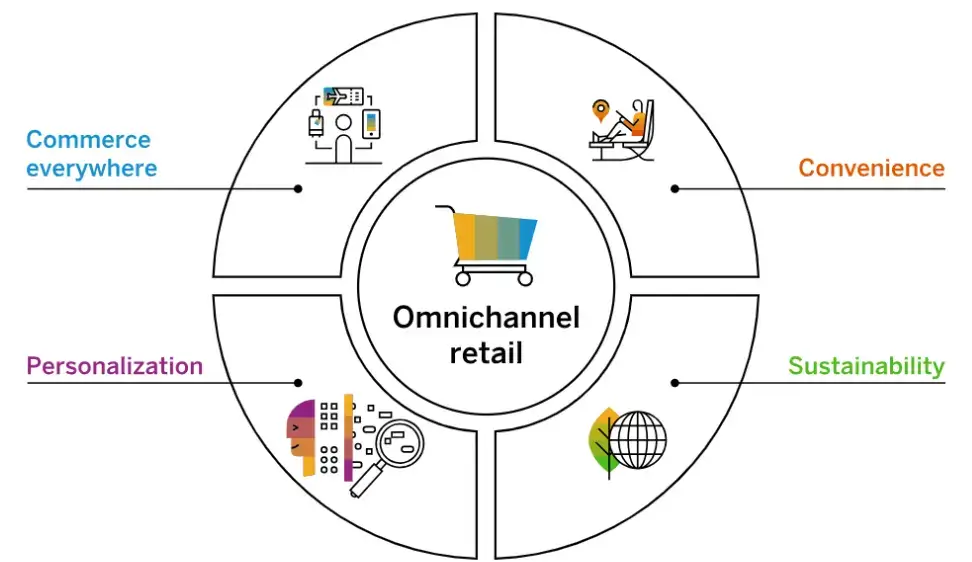
What Is Omnichannel Retailing?
Omnichannel retail is about being there for your customers wherever they are and making sure they always have the same, consistent experience with your brand.
So, what sets omnichannel apart from multichannel experiences? It's not just about having multiple communication channels – online store, brick-and-mortar store, mobile experiences, etc.
It's about making sure these channels communicate with each other to provide a seamless and integrated buying experience.
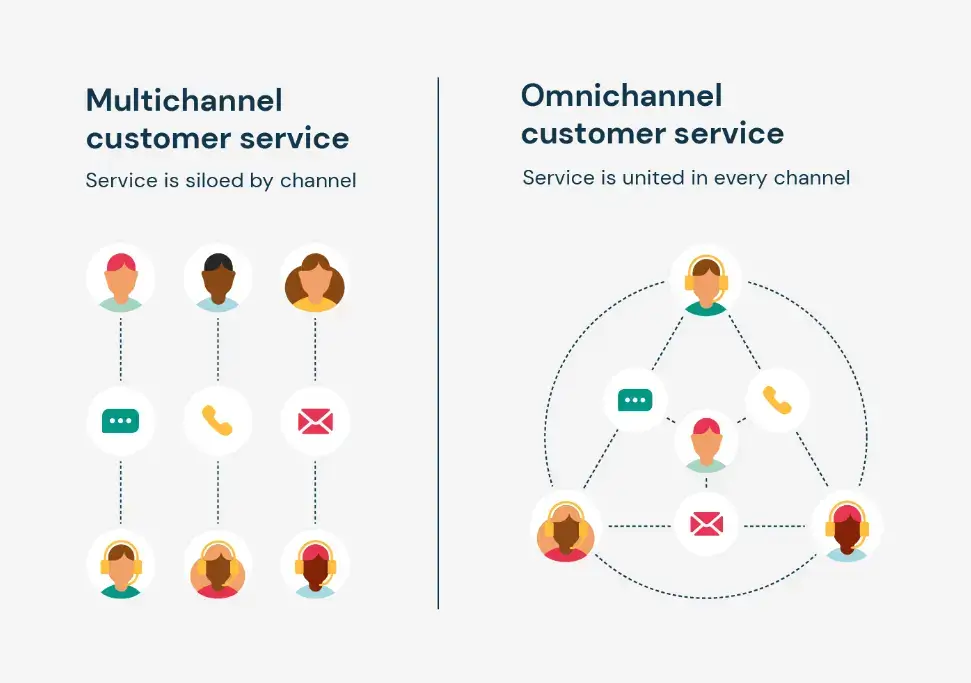
Common best omnichannel marketing examples include:
- Apple
- Disney
- Spotify
- Amazon
- Google Chrome
Imagine a customer browsing products on your digital channel, getting queries addressed via social media, trying out items at your physical store, and finally making a purchase through your app.
In an omnichannel world, every step is interconnected and effortless, hitting all customer touchpoints seamlessly.
Why Is Omnichannel Commerce Valuable?
Simply because it skyrockets your sales, builds loyal customers, and adaptability, let's break this down.
-
Boosted customer loyalty
Think about your favorite coffee place. You might love it because you can order ahead in their app, breeze past the line, and find your drink waiting.
This seamless brand experience between the app and store? Pure omnichannel magic.
Businesses that nail this approach not only offer a smoother process but also ensure quality interactions with their brand. As a result, customers keep coming back time and again.
-
Leveraging data
Ever heard the saying, "Data is the new oil"? Retailers who use omnichannel marketing strategy pull info from all sources: website browsing habits, in-store purchase history, app interactions, and even responses to online promotions.
Let's imagine an online booking platform. If they were to track user search patterns, preferred destinations, and popular flight times, they could offer tailored suggestions and flight discounts or deals to their users.
Similarly, if a small bookstore sees a spike in online views for a specific book but few in-store purchases, they could craft a special in-store display or promotion for it.
Knowledge turns into power, and power into profit in this business model.
-
Open doors to more sales
Ever been hesitant to enter a physical store but then bought loads from their online site during a late-night shopping spree? Omnichannel retailers tap into these diverse buying habits.
A study once showed that:
Businesses with multiple channels earn 38% more than those with just one.
Omnichannel retail strategies tap into various customer buying habits, ensuring a personalized shopping experience.
-
Quick moves in a fast world
Trends change faster than you can say "TikTok dance challenge." Retailers with an omnichannel strategy can jump on these trends quickly.
Imagine noticing a product going viral on Instagram and immediately promoting it across your website, app, and in-store.
-
Smoothing out the bumps
Businesses let you buy online and return in-store. This makes the whole shopping experience for customers smoother and causes them to spend more in the long run.
-
Staying ahead
The future is always uncertain, but omnichannel retail strategies offer different retail insurance types. By building a flexible, adaptable system, you can weather whatever the market throws next.
If you're a retailer, especially a solopreneur or small business owner, going omnichannel isn't just a good move—it's THE MOVE. Adapt, grow, and watch as your business reaps the rewards.
Now, you could be wondering, "Alright, but what does this look like in the real world?" Dive in with me as we explore omnichannel retailing in all its glory.
5 Omnichannel Avenues To Leverage
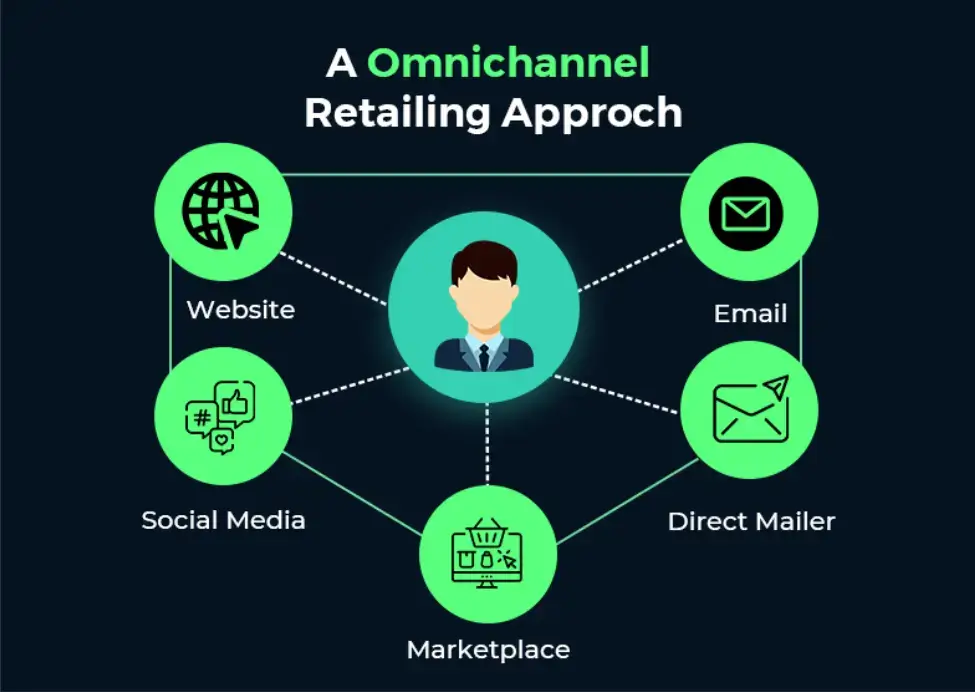
1. E-commerce websites
Who hasn’t indulged in some late-night online window shopping? With the surge in eCommerce, the entire world's marketplace is now right at our fingertips.
From fashion to specialized products, our digital screens have become our new favorite malls. 87% of us now kick off our shopping journey online.
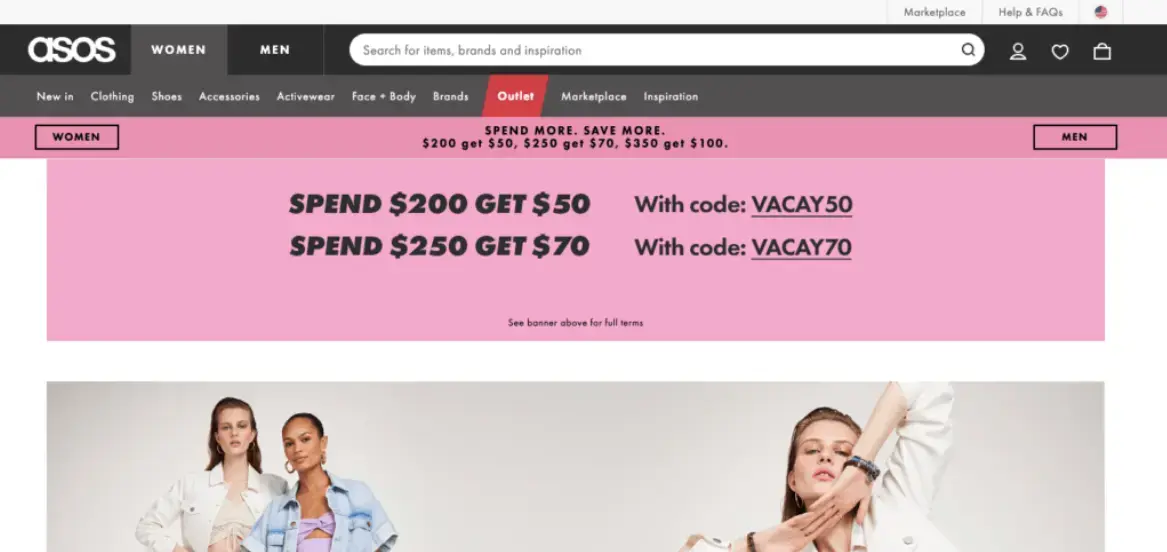
Yep, our digital screens have become our new favorite malls. Here are popular eCommerce examples:
- ASOS: This global fashion giant is more than just an eCommerce site. With its inclusive size ranges, styles, and brands, ASOS set a benchmark in user-friendly online shopping. Its detailed product pages, complete with videos and 360-degree views, make digital window-shopping an experience in itself.
- ShopSolarKits: Taking a leap towards sustainable choices, ShopSolarKits offers a wide range of solar kits. Their customer-centric approach is evident in their flexible return policy. Customers can return products "as new" in their original packaging within 30 days without any restocking or processing fees, although the return shipping is on them. Their attention to detail, even in their return policy, is a testament to their dedication to customer satisfaction.
- Book Depository: In the realm of books, Book Depository has turned the page on traditional retail with its e-commerce model. Not only does it boast a massive global reach, offering free shipping to over 160 countries, but it also provides incredibly user-friendly features. With features like detailed book synopses and user reviews, it helps online bookworms make informed decisions without missing the in-store experience.
2. Click-and-collect
Remember those times when you wished for an online shopping convenience but hated the wait for delivery? Enter click-and-collect.
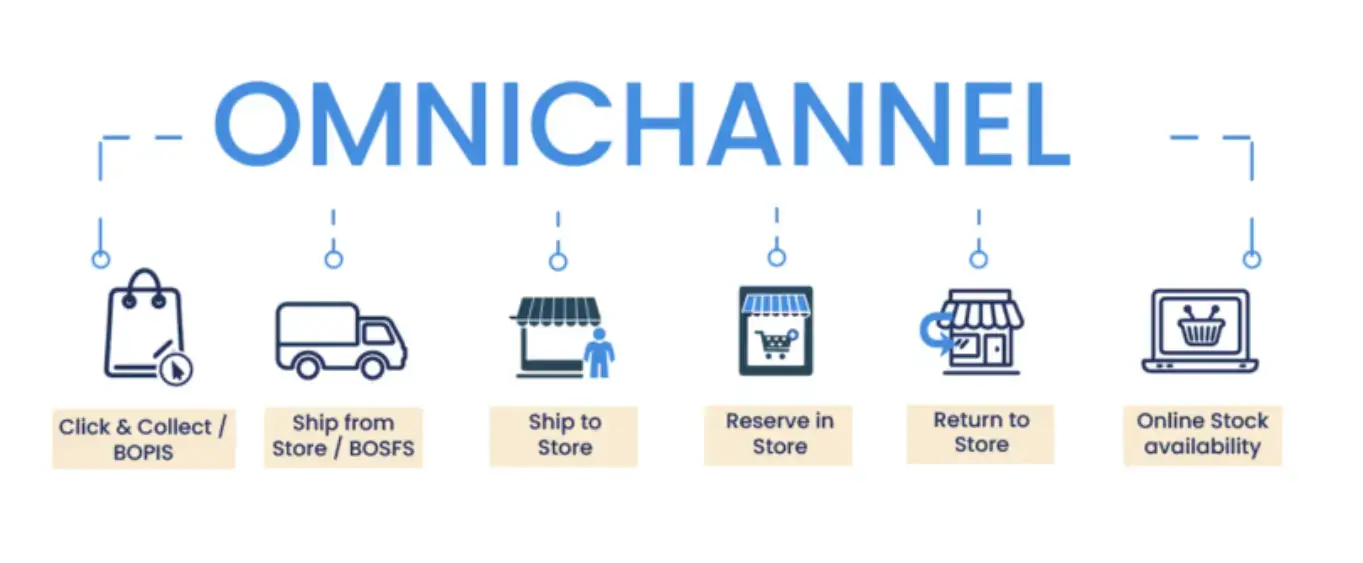
It lets you order online and grab your stuff almost instantly. Consider these 2 examples:
- Walmart online pickup: Walmart turned the shopping game on its head. Pick your favorites online, swing by your local store, and bam – they'll walk your order straight to your car. Forget the waiting games; this is how you fast-track your shopping spree.
- Target drive up: Talk about red-carpet treatment. Target's Drive Up is the shopping world’s A-lister. Choose your items online, pop your trunk at the local Target, and voilà – your goodies are hand-delivered, VIP style.
3. Email & SMS campaigns
Buzzes, beeps, and pings. Our inboxes and phones aren’t just about emojis and memes; they're the new-age billboards showcasing the hottest deals and the latest drops.
- Dollar Shave Club email campaigns: Talk about slicing through the clutter. Dollar Shave Club’s emails aren’t your average inbox fillers. Tailored, tempting, and always on point, they make you think, “Maybe I do need a new razor”.
- Etsy SMS notifications: Etsy's not just selling crafts; they’re weaving stories, one text at a time. Whether it's a dispatch update or a nudge about a fresh product drop, their SMS game keeps the shopping spirit alive, getting you pumped to see the delivery van pull up.
4. Social media platforms
Who said social media was just for cute cat videos and food pics?
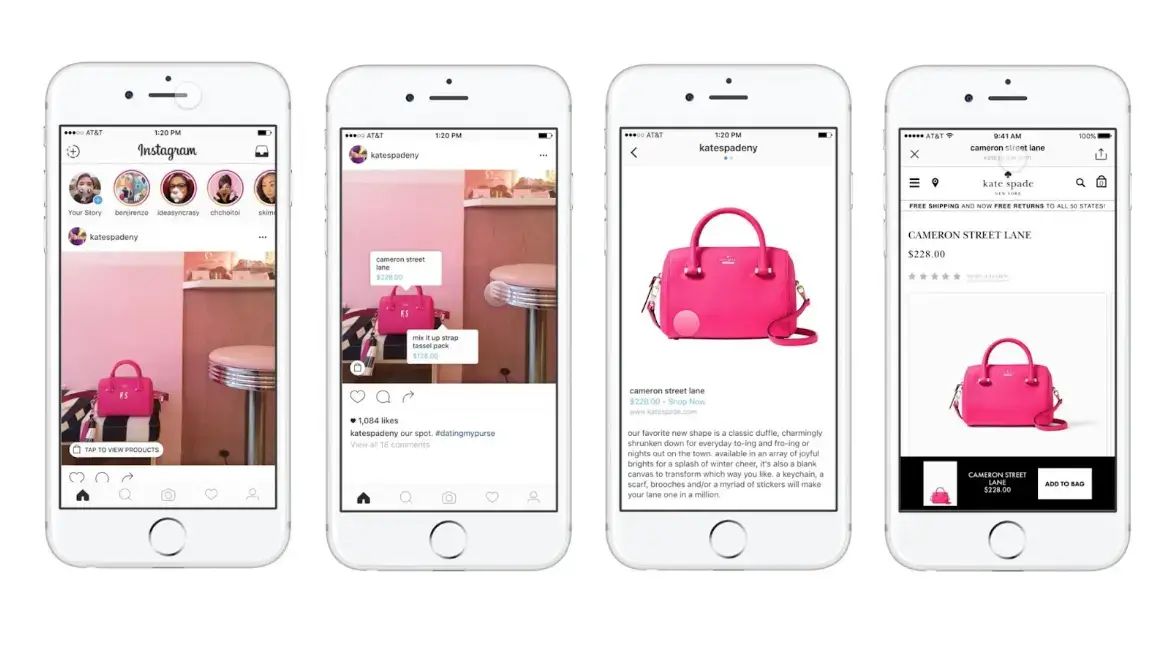
Today, our favorite platforms are transforming into bustling digital marketplaces.
- Pinterest buyable pins: Dream boards turn real. Pinterest, once our go-to for inspiration, now lets you snap up that dreamy home decor or chic outfit directly. Those buyable pins? They're turning our virtual wishes into tangible treats.
- Instagram shops: Have you ever been mid-scroll and suddenly stumbled upon a must-have item? Instagram is not just serving up style inspiration anymore. With its integrated shopping feature, that envy-inducing handbag or killer shoe pair is now just a tap away. No more DMing brands with “Price, please?” - it’s all there, streamlined, and ready for your shopping pleasure.
5. Mobile apps
Smartphones. they're not just for calls and texts. Today, they’re our on-the-go shopping companions, brimming with apps that bring the world's marketplaces to our pockets.
- Starbucks mobile order & pay: Coffee lovers, this one's for you. Starbucks transformed our morning ritual with their Mobile Order & Pay feature. Customize your brew, pay in advance, and skip the line. It’s the VIP treatment every caffeine aficionado deserves.
- Amazon app: Online shopping kingpin, Amazon, took its game to the next level with its intuitive mobile app: real-time tracking, one-tap buying, and those oh-so-tempting lightning deals all in your hand. Whether you're lounging at home or on a busy commute, the next great deal is always within reach.
But what's the next step? How can you apply this to your brand? Read on.
8 Simple Steps To Nail Omnichannel Marketing
- Understand your customer
- Map the customer journey
- Integrate systems & data
- Invest in social commerce
- Personalize content & recommendations
- Ensure consistent messaging across channels
- Ask for feedback & continuously monitor
- Train your team
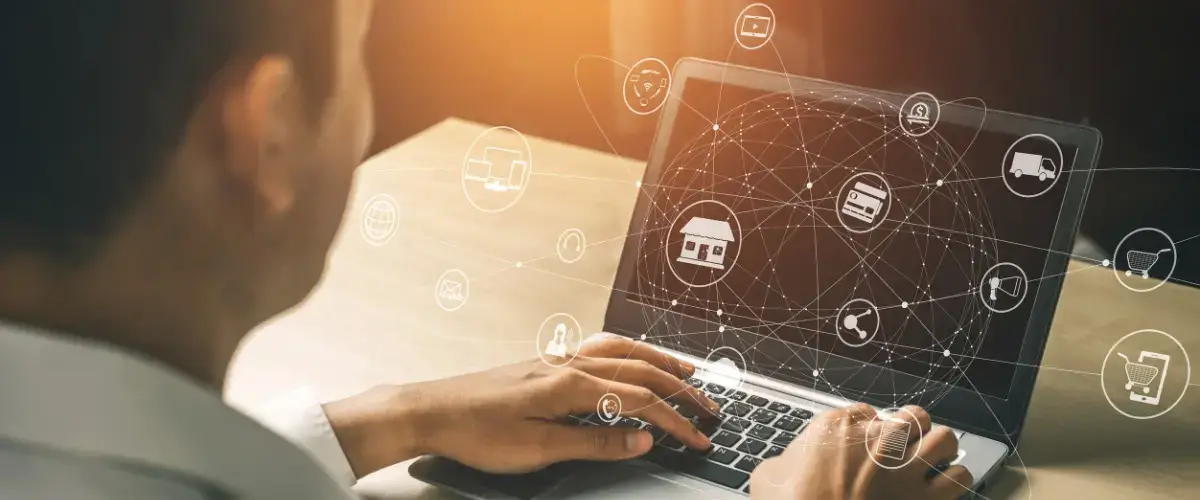
Custom image created in Canva
1. Understand your customer
Any successful marketing or retail strategy lies in understanding the customer. Before expanding into multiple sales channels, pinpoint who exactly you're serving.
Dive into market research, conduct surveys, and analyze customer data. This helps in creating an ideal customer profile.
By understanding their behavior, preferences, needs, and pain points, you can tailor your approach. Here are important metrics to consider:
- Ticket volume
- Customer profitability
- Customer satisfaction
- Customer lifetime value
- Recency and repurchase rates
For instance, consider Sephora’s Beauty Insider program. Rather than offering blanket promotions or products, they use purchase history to give personalized experience recommendations.
By addressing individual needs and preferences, they ensure relevance and foster customer loyalty.
2. Map the customer journey
Today's customer journey is no longer linear. From discovery to post-purchase, customers can jump between various online channels and offline channels.
A comprehensive strategy acknowledges and caters to this. For instance, Disney’s approach to retail experiences is the gold standard.
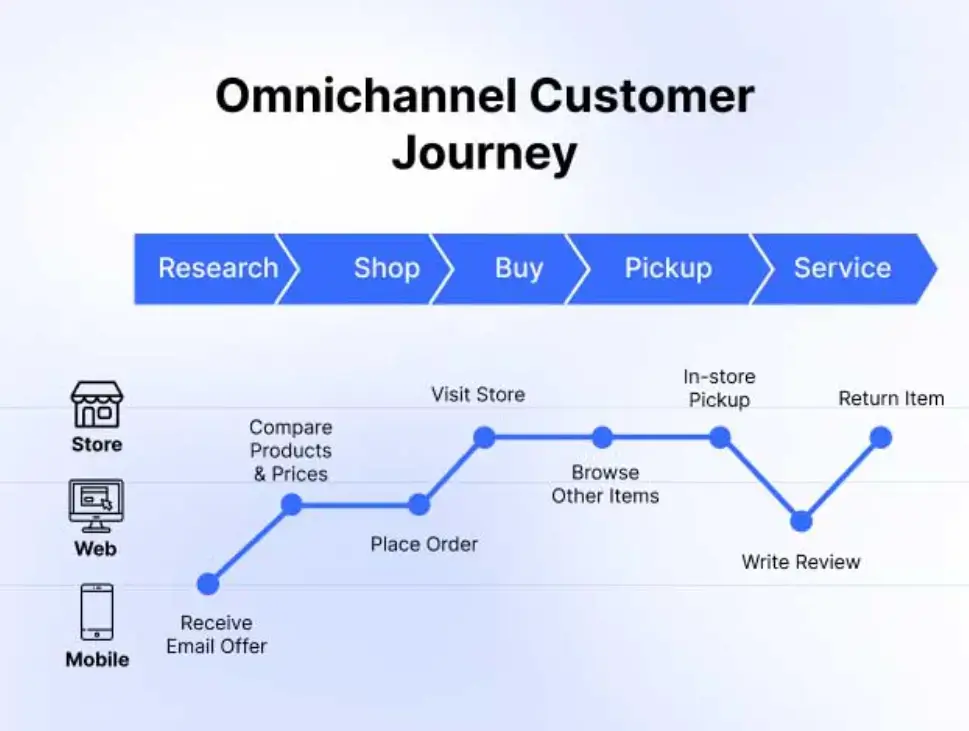
With their MagicBand system, a visitor’s experience starts from the website, extends to their park visits, and concludes with personalized photos and memories.
The MagicBand acts as a hotel room key, photo storage, food ordering tool, and more. By understanding and integrating every touchpoint, Disney encapsulates a 360° experience for customers that’s both smooth and memorable.
3. Integrate systems & data
The digital age produces great data amounts. From online shopping carts to in-store visits, every interaction offers valuable insights.
However, the real magic lies in integrating these data points. Best SaaS tools that help in moving data seamlessly, like from PostgreSQL to BigQuery, can help make the process easier.
When we talk about seamless integration, it's not just about software data. There are even specialized systems for managing physical inventories, like yard management systems, making sure that every piece of the supply chain communicates effectively.
To make the most of this data, consider having a cohesive system in place.
This integration prevents stock-outs and enhances the customer's seamless shopping experience by providing accurate product information.
For example, using something like the Kanban inventory system works great for managing online store stock. It helps make sure you’re looking at all the info from different places in one go and doing something about it.
Take Nike, for instance. They've transformed their inventory management by integrating online and offline data. By doing so, they can track product availability in real-time.
This integration prevents stock-outs and enhances the customer's online shopping experience by providing accurate product information.
4. Invest in social commerce
Social media platforms have rapidly evolved from mere communication tools to powerful commercial platforms.
Instagram and Facebook have developed integrated shopping features, turning casual browsing into potential purchases.
But it's not just traditional social media; platforms like Discord now allow users to sell access to their communities, adding another dimension to the online commerce landscape.
Kylie Cosmetics, launched by Kylie Jenner, is a shining example of leveraging social commerce.
The brand smartly leveraged Kylie's vast Instagram following, using shoppable posts to transform followers into customers.
This direct bridge from viewing a product to a purchase decision streamlines the buying process and capitalizes on impulsive buying behaviors.
5. Personalize content & recommendations
In today’s crowded digital space, personalization isn’t a luxury; it’s a necessity. Using data analytics, you can tailor content, offers, and product recommendations to individual users.
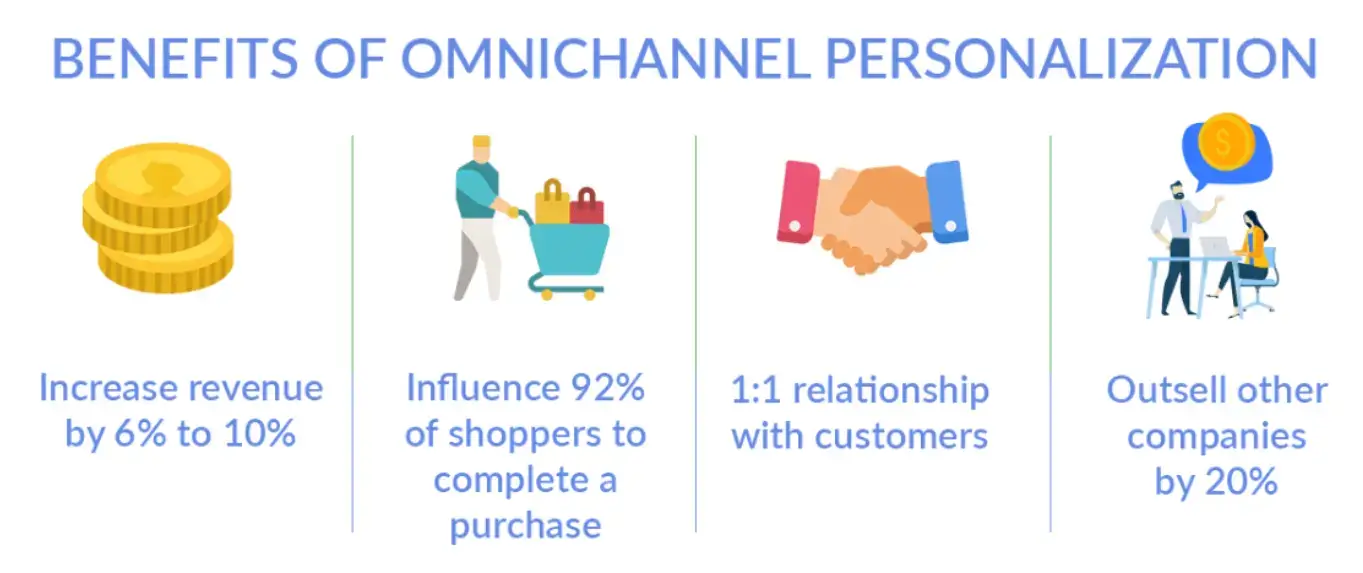
Companies like Netflix and Amazon are frontrunners in this space. Their recommendation engines, driven by complex algorithms and vast user data, offer highly personalized suggestions.
These aren’t random shots in the dark; they're calculated strategies. When a user feels understood and catered to, they’re more likely to engage, trust, and ultimately purchase.
6. Ensure consistent messaging across channels
Omnichannel means being everywhere, but it also means consistent and unified messaging. A customer could initiate their journey on mobile, transition to desktop, and finalize their purchase in a physical store.
Leading brands make sure their messaging, promotions, and branding stay consistent across all these touchpoints.
Apple, for instance, maintains a uniform look, feel, and messaging across its website, mobile app, email campaigns, and physical stores. This kind of consistency fosters brand recognition and trust.
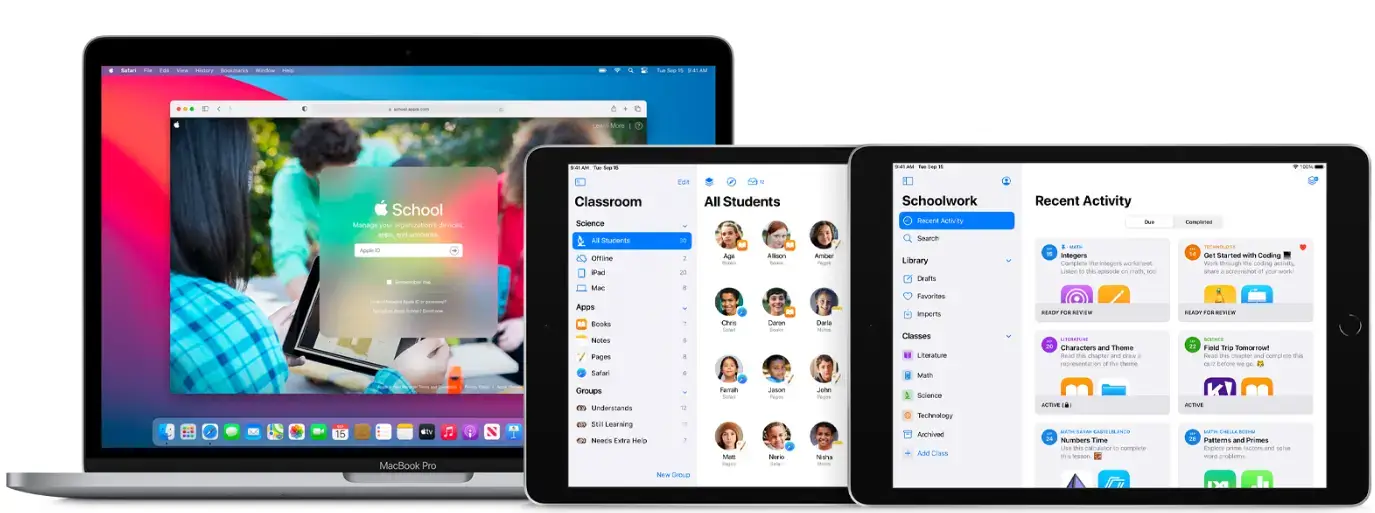
7. Ask for feedback & continuously monitor
Complacency is a brand’s worst enemy. The digital landscape is ever-evolving, and so are customer expectations.
It's not merely about adapting but consistently engaging and listening to feedback for refining strategies.
Utilizing insights and market trends from various platforms, even ones like MarketBeat could offer a look into diverse companies and sectors.
Consider the way Airbnb does it. The company maintains a dialogue with its users, seeking feedback, which becomes a tool for honing their services.
This approach ensures an ongoing alignment with, and perhaps even surpassing, user expectations without making a big show of it.
8. Train your team
Every team member, whether they interact with customers directly or work behind the scenes, should understand and reflect the brand's omnichannel vision.
An omnichannel strategy isn’t just about platforms; it's about people.
It’s not just about technology but more about human interactions that will determine your strategy’s success.
Conclusion
Getting omnichannel right will help your business a lot. It joins online and offline shopping and makes everything smoother for customers. The tools you pick to do this are important.
Enter POWR: your one-stop tech partner from San Francisco, enhancing small businesses since 2014.
We’re dedicated to providing you with easy-to-use tools to elevate your online store, ensuring it shines whether your customers are shopping from their sofas or in-store.
Explore the array of POWR plug

